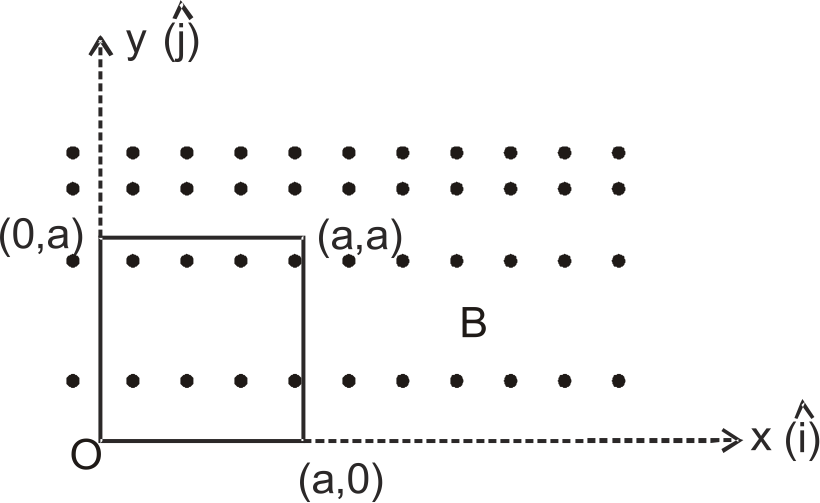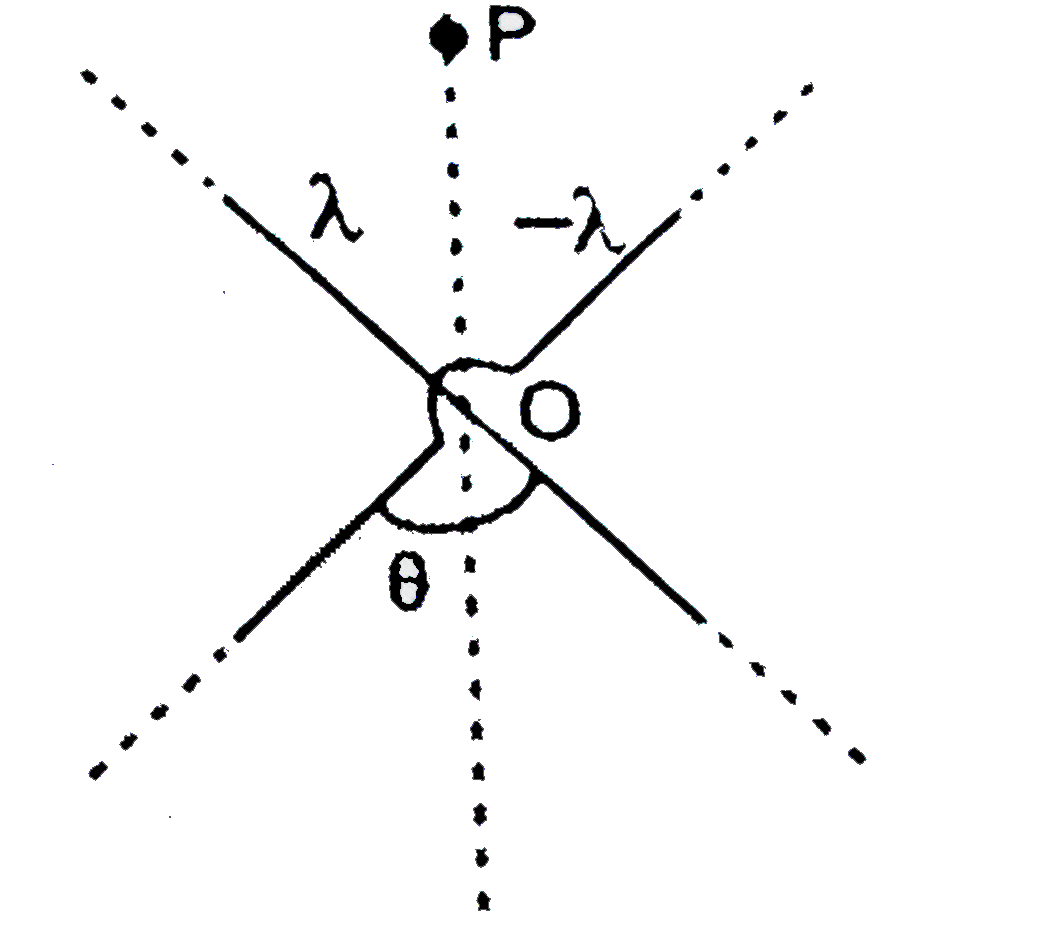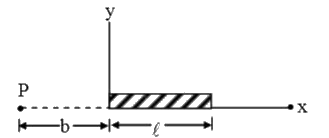A square loop of side 'l' having uniform linear charge density 'λ' is placed in 'xy' plane as shown in the figure. There is a non uniform electric field →E=al(x+l)ˆi where a is a constant. Then resultant electric force on the loop if l=10cm,a=2N/C and charge density λ=2μC/m is:

4×10−6N
4×10−5N
3×10−6N
3×10−5N
The correct Answer is:A
E at AB=al(l+l)=2a∴ F on AB =2aλl
E at CD =al(2l+l)=3a∴FonCD=3aλl
On BC and AD electric field is uniform ∵ x is not constant. But on BC and AD electric field will have the same type of variation.
FAD=FBC=∫2lx=l(λdx).al(x+l)
=aλl[x22+lx]2ll=aλl[3l22+l2]=52aλl
∴ Total force on the loop =2aλl+3aλl+2(52aλl)
F=10alλ
Using values F=4×10−5N
Topper's Solved these Questions
Similar Questions
A wire loop carrying current I is placed in the x−y plane as shown in the figure. If an external uniform magnetic field →B=Bˆi is switched on, then the torque acting on the loop is

View SolutionA square loop of side 'a' is placed in x−y plane as shown in figure. In this region there is non-uniform time dependent magnetic field →B=(cy3t2)→k, [where t is time and c is constant] then magnitude of emf induced in loop is

View SolutionFigure shows a long wire having uniform charge density λ as shown in figure. Calculate electric field intensity at point P.

View SolutionA circular ring of radius R and uniform linear charge density +λC/m are kept in x - y plane with its centre at the origin. The electric field at a point (0,0,R√2) is
View Solution(i) Two infinitely long line charges each of linear charge density λ are placed at an angle θ as shown in figure. Find out electric field intensity at a point P, which is at a distance x from point O along angle bisector of line charges.

(ii) Repeat the above question if the line charge densities are λ and −λ. as shown in figure.

View SolutionTwo infinitely large charged planes having uniform surface change density +σ and -σ are placed along xy plane and yz plane resp as shown in figure. Then nature of electric lines of force in xz plane is given by

View SolutionIf three infinite charged sheets of uniform surface charge densities σ,2σ and −4σ are placed as shown in figure, then find out electric field intensities at points A, B, C and D.

View SolutionA rod of length 'l' is placed along x-axis. One of its ends is at the origin. The rod has a non-uniform charge density λ= a, a being a positive constant. Electric potential at P as shown in the figure is -

View SolutionA thin non-conducting ring or radius a has a linear charge density λ=λ0sinϕ. A uniform electric field E0ˆi+E0ˆj exist in the region . .Net torque acting on ring is given as :

View SolutionA rod of length l is placed along x - axis. One of its ends is at the origin. The rod has a non - uniform charge density λ=ax, a being a positive constant. The electric potential at the point P (origin) as shown in the figure is

View Solution
